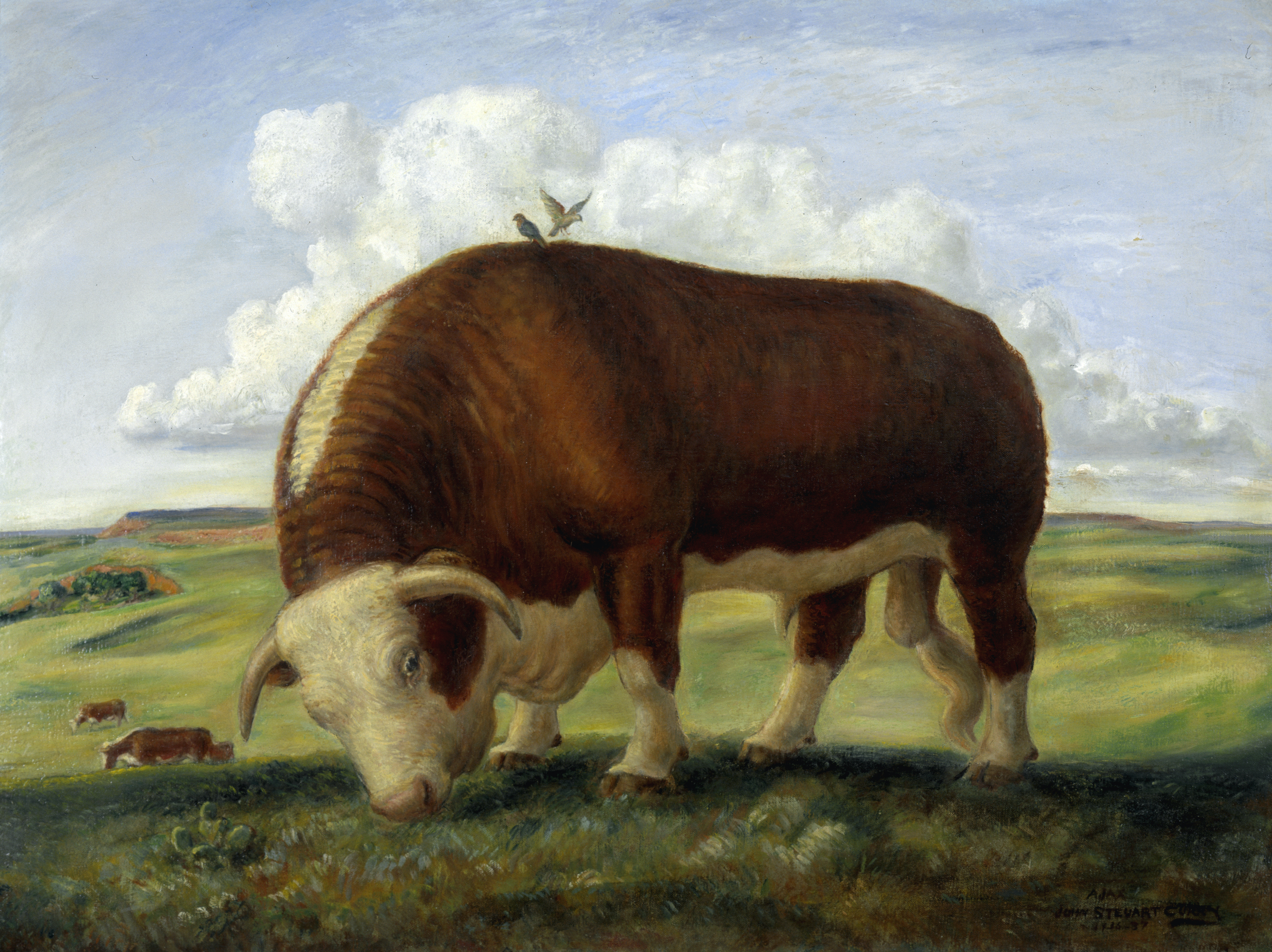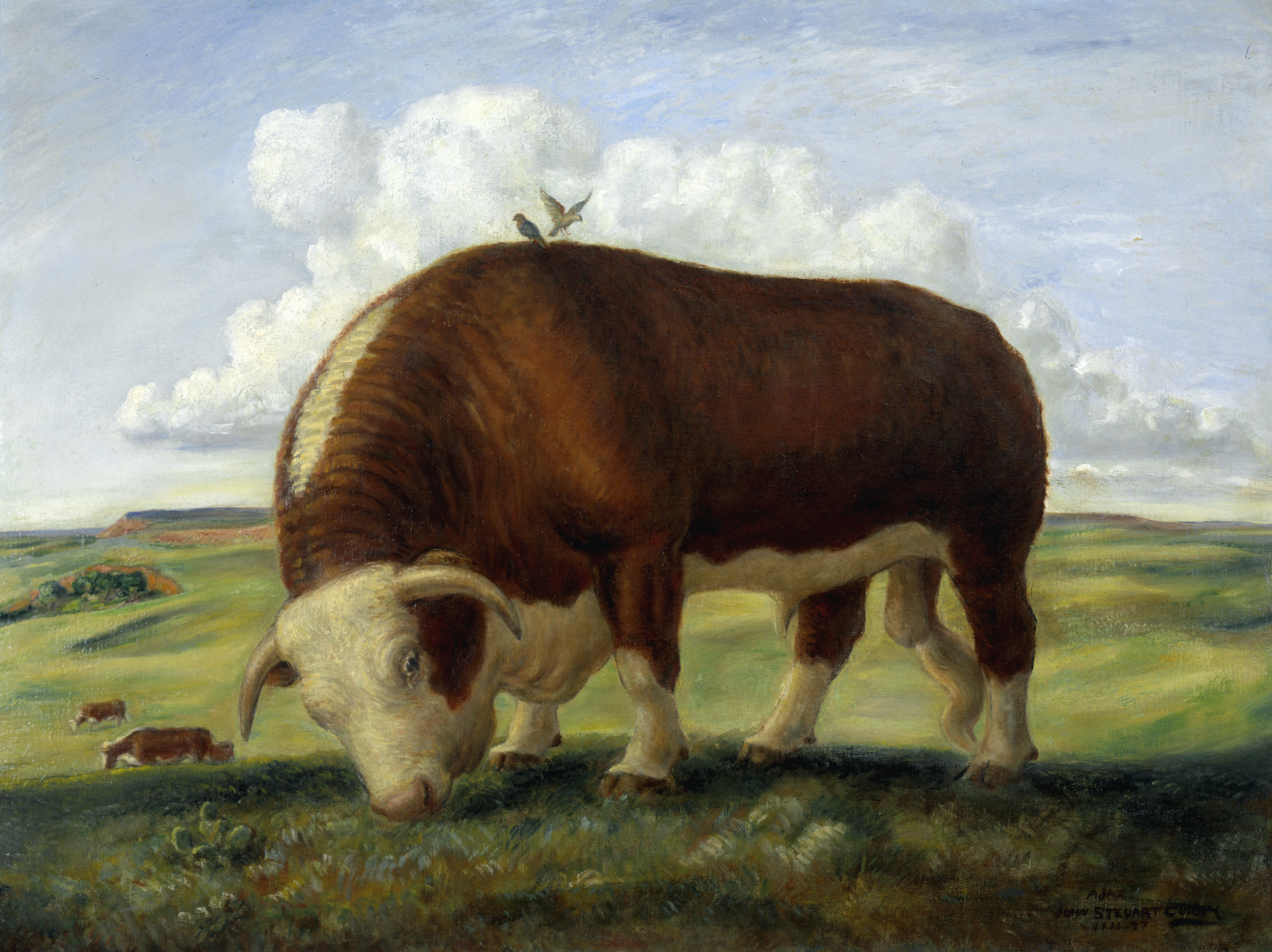American painter John Steuart Curry, hailed as one of the three great painters of American Regionalism, painted robust scenes of heartland America that emphasized a homely kind of freedom. His enormous cow Ajax, a well-fed Hereford bull with two cowbirds on his back, has four sturdy legs, an immense head, and a thick tail, all seemingly rooted in the American earth. The shape of the ox is mirrored by the columns of cloud behind him, and the two tiny birds emphasize his massive scale. Curry’s vision was all about earth and the horizon, and Ajax the ox was the perfect symbol to combine the two.
The painting was made with the intention to reassure Americans after the Dust Bowl years. The Dust Bowl was the name given to the drought-stricken Southern Plains region of the United States, which suffered severe dust storms during a dry period in the 1930s. According to Curry's friend Reginald Marsh, it was really a self-portrait.
Curry featured Ajax the bull in several of his works, such as the mural Kansas Pastoral. The subject also became a target for mockery among those who opposed Regionalist painting and considered it superficial.
P.S. Holy Cow! Did you know that Dutch artists loved to depict cows on their paintings? Click here to find out why!


 John Steuart Curry
John Steuart Curry